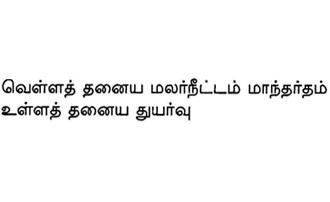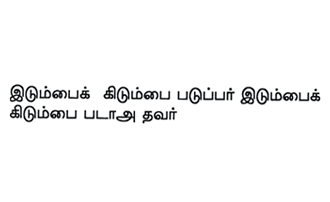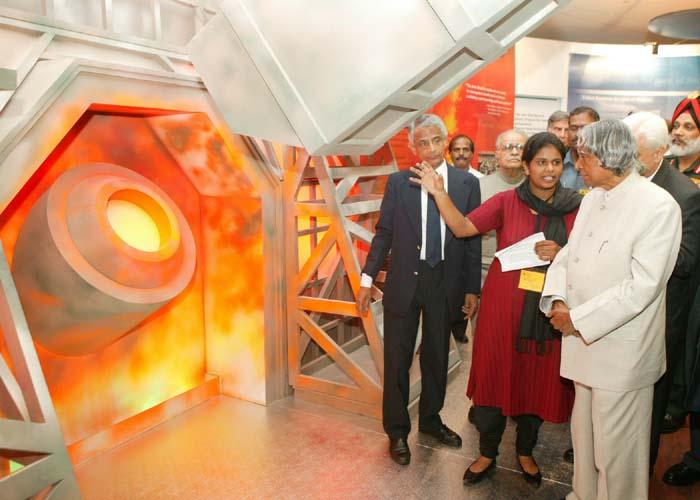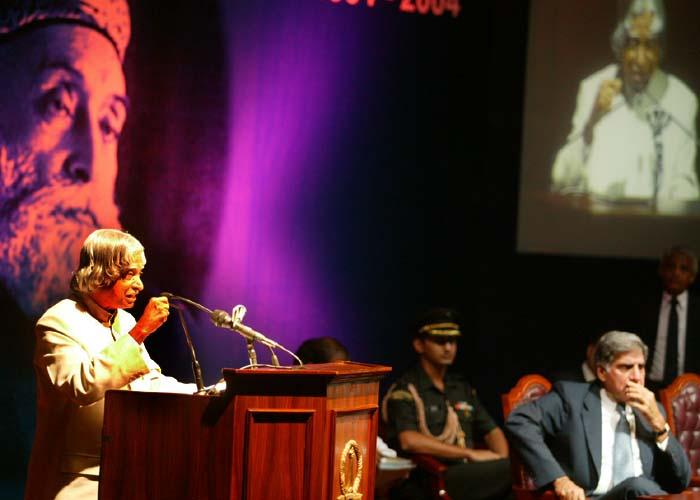Address At The Function To Mark The 100th Death Anniversary Of Jamsetji Nusserwanji Tata, Bangalore
Bangalore : 23-04-2004
Indomitable Spirit
I am delighted to participate in the function to pay homage to Jamsetji Nusserwanji Tata to mark the 100th death anniversary of the great soul and one of the proud sons of India. I am fortunate to be with the members of the TATA family, organizers, industrialists, scientists, educationists and other distinguished guests. When I am in the midst of you, I was thinking what thoughts I can share with you.
Lives that can change
Friends, I have a special interest in studying the personalities who have changed the course of human lives. In this respect three personalities have inspired me. The first one is CHARLES DARWIN, who propounded the theory of ?Natural Selection?. He made us think differently about how the evolution of human being took place. The second is Thomas Alva Edison, who invented electricity, which is, indeed revolutionized every field of science and technology and human life. The third is Mahatma Gandhi, whose Ahimsa Dharma movement against racial discrimination in South Africa and fought against British rule in India through non-violence. He not only got freedom for billion people of India, but became the forerunner for freedom movements for many countries in our planet. Jamsetji Nusserwanji Tata fought for India?s independence through visionary actions for Indian steel and power industry and scientific and technological institutions.
Three missions of JN Tata
Jamsetji Nusserwanji Tata laid the foundation for three important areas. The first was the sowing of seeds for TATA Iron and Steel Plant, second to create hydro-electric power station, third was establishment of an educational and research institute popularly known as TATA institute now known as Indian Institute of Science, Bangalore. Though Jamsetji Nusserwanji Tata, envisioned all these institutions before his death in May 1904, the IISc-Bangalore opened its doors in 1911. The first ingot of steel rolled out from Tata Iron and Steel Plant in 1912. The hydro-electric power was switched on in Mumbai in 1915. Today, after 100 years of his demise we see all these three institutions flourishing and they are in their full bloom. IISc has become a world class branded institution. Tata Steel has crossed the 5 million tons per year steel output. The Tata Hydro Electric Station has given birth to many power plants in the country. Tata?s vision has brought a revolution in steel industry, power generation and education. I admire this great visionary, a visionary revolutionist who evolved a new method of working towards India?s freedom through development of industry, power and scientific research. The light he lit in our country has lit many lamps and is still lighting.
The Challenge
In British India, a revolutionary thinker was there to think about the three great institutions that we have today. Among the people who have assembled here young and old, there may be a few who would like to fight another enemy in the context of transforming India into a developed nation. Who is that enemy? I would like to narrate an incident, which took place when I was the Principal Scientific Adviser to the Government of India. I visited Anand, which is the home for the white revolution visionary my friend Dr. Verghese Kurien. After attending IRMA convocation, I talked to the students at Anandalaya high school. After my presentation to them about how we should live in a developed India, and how the young should work for it, one boy got up and asked me, ?Mr. Kalam, can you please tell me who is our enemy?? I turned the question to the student community to discuss and find a proper answer, because the question was very thought provoking. Students actively discussed and argued and finally listed various types of enemies such as political system, corruption, lack of infrastructure, education etc. But one girl Snehal Takkar, a 10th standard student, said ?India?s number one enemy is Poverty?. We all have to forget about caste, religion or language and unitedly fight against this enemy. Friends, the girl?s challenge, I am returning to you because, you are the most powerful members of the society. You come from different walks of life such as industry, science, technology, academy, legal and other professions. The vision for developed India has to be transformed to a developed nation in a competitive world. In this context I would like to discuss the law of development.
Law of development
I was studying the development patterns and the dynamics of connectivity between nations, especially in trade and business. As you all know the world has a few developed countries and many developing countries. What is the dynamics between them and what connects them? Developed country has to market their products in a competitive way to different countries to remain as developed country. A developing country to get transformed into developed country; also has to market their products to other countries. Competitiveness is the deciding factor for the successful business and trade. Competitiveness has three dimensions: quality of the product, cost effectiveness and supply in time. Indeed this dynamics of competitiveness in marketing of products by developing and developed countries is called the ?law of development.? Technology is the key to competitiveness. Academia and research institutions must provide this input to the industry for making our products competitive, to enable India to become a developed nation in less than two decades.
Integrated action
As you are aware to meet the needs of one billion people, we have the mission of transforming India into a developed nation. We have identified five areas where India has a core competence for integrated action: (1) Agriculture and food processing (2) Reliable and Quality Electric power, Surface transport and Infrastructure for all parts of the country. (3) Education and Healthcare (4) Information and Communication Technology (5) Strategic sectors. These five areas are closely inter-related and if well done would lead to national, food, and economic security. Water management is a crucial need for irrigation and drinking and also for production of energy.
Global crisis of water
Today, with a global population of 6 billion, only 3 billion have access to limited or perhaps the satisfactory supply of water. It is estimated that 33% of the world population has no access to sanitation and 17% has no access to safe water. But by 2025 the world population is going to rise to 8 billion but only one billion will have sufficient water. Two billion (25%) will have no access to safe water. Five billion (62%) will have no access to water for sanitary needs. We should collectively find solution to this problem.
Possible solutions
Globally, there are a few solutions to solve water shortage. I would like to give certain suggestions relating to our country, it may be applicable to other countries also. The first solution is by redistribution of water. India has already started this by wide spread promotion of rain water harvesting in both rural and urban areas, but it has to done in mission mode as few states are already doing. In addition we need to put a stop to large scale wastage of water and promote water recycling on compulsory basis in urban and rural areas. It is essential to note that we get the monsoon rain only for three months in most of the places, whereas the consumption is for all 365 days using the ground and stored water and hence the need for continuous recycling.
Sea water desalination
Fortunately, we have a resource of 91% of water in the form of oceans and seas. Therefore, second solution would be to create new perennial sources of fresh water by seawater desalination. There are many desalination plants already established. Global status: World over there are more than 7,500 desalination plants in operation. 60% of them are located in the Middle Eastern countries for the reasons of desert conditions. Fortunately, these nations have the energy potential of gas and oil from fossil materials to power the desalination process. The pattern of the seasonal change and water scarcity necessitate the consideration of desalination of sea water as one of the possible options by many countries. Of course, the cost of drinking water in this process has to be made affordable through technological innovations. It is reported that in 1980 the cost of desalinated water for 1000 ltrs was $ 2.5. In 1990 the cost went down to $1.5 and in 2000 it has further come down $1 dollar. Also it has been presently reported in 2004, the cost for 1000 liters has come to 50 cents using gas and oil as energy. We have to develop the technology by using solar energy to bring down the cost further.
Research on desalination technology
India attaches importance to research and technological solution for various desalination processes. Fortunately Department of Atomic Energy, DRDO, CSIR and academic institutions are working in different processes for desalination whereas we should recognise that there are already large operational plants elsewhere in the world. Nuclear Desalination Demonstration Project (NDDP) at Kalpakkam has demonstrated the safe and economic production of good quality water by desalination of seawater comprising of 4500 cubic meter per day Multistage Flash (MSF) and 1800 cubic meter per day Reverse Osmosis (RO) plant. I am informed that the plants can be scaled up to 10 times from the present configuration.
The design of the hybrid MSF-RO plant to be set up at an existing nuclear power station is another solution. The MSF plant based on long tube design requires lesser energy. The effect on performance of MSF plant due to higher seawater intake temperature is marginal. The preheat RO system part of the hybrid plant uses reject cooling seawater from MSF plant. This allows lower pressure operation, resulting in energy saving. The two qualities of water produced are usable for the power station as well as for drinking purposes with appropriate blending. The post treatment is also simplified due to blending of the products from MSF and RO plants.
Another approach is the use of dual-purpose plants, where the desalination plant is connected to an electricity plant, utilising the waste heat from the electricity plants run by nuclear energy. I understand, under favourable conditions, dual-purpose plants decrease the cost of desalinated water below those of conventional desalination methods, primarily through energy conservation.
Desalination process
I visited the Umm Al Nar desalination plant in Abu Dhabi, which produces nearly 500 million litres of fresh water per day using the MSF (Multi Stage Flash) process. This one plant has totally transformed the ecology of the desert, and is an example of how large scale water supplies may be obtained from the oceans. In this process the sea water has to be flashed into steam by heat addition at low pressure. When the steam is condensed to produce fresh water, part of the energy is used to run steam turbines to produce electricity to feed back to the grid. However, even with this energy recovery, no major breakthrough in technology has acquired since then to reduce the specific desalination energy to values below 10-15 units per cubic meter of fresh water. The gulf region produces aggregated quantity of 4 billion liters of fresh water consuming 1.5 Giga Watts of electricity burning enormous amounts oil and gas in the process. This process may be the cost effective solution for gulf region due to abundant availability of gas and oil for few decades to come. But other regions like India need new processes and new solution like use of reverse osmosis using solar energy and MSF using nuclear energy. It is time Indian industrialists take a lead in establishing desalination plants and also start using solar power in a major scale. This will be a fitting memorial for Jamsetji Nusserwanji Tata.
Conclusion: Indomitable spirit
For success in these missions we need indomitable spirit. Let us study the characteristics of indomitable spirit. It has two components. The first component is that there must be a Vision leading to higher goals of achievement. I would like to recall a couplet from Thirukkural by the Poet Saint Thiruvalluvar written 2500 years ago.
Quote:

It means that whatever may be the depth of the river or lake or pond, whatever may be the condition of the water, the lilly flower always comes out and blossoms. Similarly, if there is a definite determination to achieve a goal even if it is impossible to achieve, the man succeeds.
Many of us have gone through large programmes and projects. We would have experienced that success is not in sight and there are many hurdles. The same poet reminds us at this point of time through another couplet:

We should never be defeated by any problems. We should become master of the situation and defeat the problems and succeed in the end. I consider these two Thirukkurals characterize the indomitable spirit. This is the lesson that we have learned from the great life of Jamsetji Nusserwanji Tata. Upholding the indomitable spirit is the homage that we can pay to Jamsetji Nusserwanji Tata. My best wishes to all the participants of this function.
May God bless you.


